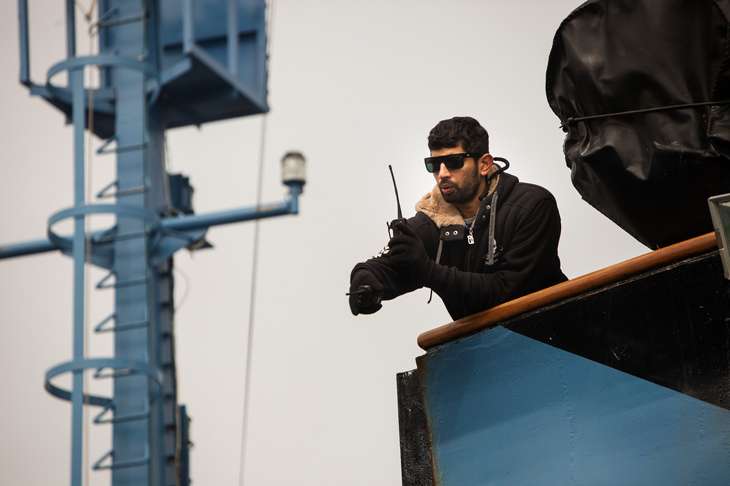Humans are killing the marine ecosystem. But this man is trying to reverse that

Siddharth Chakravarty worked for a decade in the merchant navy, and even captained cargo vessels. It was a lucrative job, but one day, he realised it was just not for him. He walked out of the merchant navy in 2011.
The reason? Because the merchant navy's goal was to maximise profits, and let the marine ecosytem be damned.
In his decade on the job, Chakravarty had witnessed violations that led to severe ocean pollution, and destruction of marine wealth. And there was nothing he could do about it if he remained with the merchant navy.
"I would helplessly watch hazardous chemicals loaded on my ship. They took least precautions and hardly followed any rules. The chemicals were haphazardly loaded and unloaded to save time and maximise the profits. It was something I could not be a mute spectator to. That is why I decided to quit the merchant navy," Chakravarty says.
Man on a mission
Once he had quit, he decided to try and undo the damage he had been witness to for a decade, and try and save the oceans and marine life. He began searching for a suitable assignment, wherein he could use his skills in the right way to help ocean and marine life conservation.
"I was searching for scientific expeditions to volunteer for and research vessels to crew on. During the search, I stumbled upon the Sea Shepherd Conservation Society. It was exactly what I was looking for. Without wasting even a minute, I wrote an email to the society, and within 10 days, I was on my way to Australia," he said.
In early 2011, Chakravarty was posted on the vessel Steve Irwin,and thus began his journey of direct action intervention and marine conservation. He went on to become captain of the Steve Irwin, which was involved in several mid-ocean direct intervention operations to prevent whale poaching and other illegal fishing activities across the globe.

"Illicit whaling still goes on, which needs to be controlled if we want to save the magnificent animal. At Sea Shepherd, my main job was to head various anti-poaching campaigns across the globe. During one such campaign in 2012, we chased a fishing vessel for 110 days. Though we managed to capture the crew, the vessel operators succeeded in sinking it to destroy the evidence. However, the evidence collected during the chase proved to be vital in the prosecution of the captain and crew in east Africa. They are now in jail," he said.
How marine poaching is done
Marine poachers have a modus operendi somewhat similar to car thieves. Like the latter put up bogus number plates on stolen vehicles, marine poachers get the vessel registered in one country, change the name mid-ocean, go for poaching, and once they poach enough fish, the vessel name is changed again before coming to any shore.
"This is to avoid arrest and subsequent prosecution. It makes it very difficult to establish the crime, even if the crew is arrested," Chakravarty said.
The scale of the problem and reasons for it
It is not just whales. Other species such as tuna, dolphin and shark are also facing the heat.
Poachers are least bothered about the loss to other species when they are on fishing spree - the nets they use catch other fish as well. When the nets are lifted, unwanted dead fish are dumped back into the ocean.
Drift net, commonly used by Chinese vessels, proves fatal for dolphins and sharks. Though it was banned in 1991, it is still used by many poachers. Though there is evidence against the poachers, it is very difficult to prove the crime and prosecute them, due to lack of coordination among various countries.
The lack of single jurisdiction covering the oceans is the biggest hurdle in controlling marine poaching. "The vessels are registered in one part of the world, operated in another part, catch is delivered in a third part while the crew is from an altogether different part of the world. This makes really difficult to bring the poachers to justice," Chakravarty said.
"Taiwanese vessels catch tuna fish in the Atlantic, which are processed in Indonesia, where cheap labour is available, and sold in USA and other countries."
At present 4.7 million vessels are involved in fishing across the globe, which take out 100 million tonnes of fish every year, making it $1.3 trillion business annually.
"It is not just marine life that is getting killed. The illicit fishing syndicate is run on tax payers' money in terms of subsidy given by various governments. The money is diverted to illegal trade marred with issues such as inhuman labour abuse, human trafficking, on-board violence, rape, murder, money laundering, tax evasion, drug smuggling and gun running," Chakravarty said.
It has also harmed many stakeholders such as fisherfolk and other native communities along the shores across the globe.
One Siddharth Chakravarty may not be enough to overturn all that. But at least it's a start.
Edited by Shreyas Sharma
First published: 27 January 2017, 1:41 IST





![BJP's Kapil Mishra recreates Shankar Mahadevan’s ‘Breathless’ song to highlight Delhi pollution [WATCH] BJP's Kapil Mishra recreates Shankar Mahadevan’s ‘Breathless’ song to highlight Delhi pollution [WATCH]](https://images.catchnews.com/upload/2022/11/03/kapil-mishra_240884_300x172.png)

![Anupam Kher shares pictures of his toned body on 67th birthday [MUST SEE] Anupam Kher shares pictures of his toned body on 67th birthday [MUST SEE]](https://images.catchnews.com/upload/2022/03/07/Anupam_kher_231145_300x172.jpg)






